Turning Backyards Into Pollinator Havens
Published: May 11, 2020

Clover is a great plant to have mixed in with your lawn for pollinators. (Photo: Flickr, Martin LaBar CC BY-NC 2.0)
(stream/download) as an MP3 file
Spring is in the air, and as insects face sharp declines, it's a great time to plant a pollinator-friendly garden.
Also, it’s dandelion season and that means Grammy is on the prowl. At age 97 Virginia Dobell relishes picking the lawn-choking weed and cooking them up for her family.
BASCOMB: Hi, I’m Bobby Bascomb and today on the Living on Earth Podcast we’ll have some tips for turning your yard into a haven for pollinators and a grandmother’s recipe for cooking up dandelions.
But first, your support helps make it possible to bring you this podcast, so please contribute what you can.
Five dollars or more makes a difference.
You can donate right now at LOE.org and thanks!
[THEME]
BASCOMB: Gardening has grown in popularity as millions of Americans are isolating at home amid the Coronavirus pandemic. And with spring in the air it’s a great time to get started with both a veggie patch and flowers to support native pollinators. With populations already in sharp decline, scientists say as many as 40% of insects may be facing extinction in the coming decades. That includes critical pollinator species like bees, which are responsible for pollinating the crops that provide one in three bites of food we eat. In Minnesota residents are one year in to a three year program that pays homeowners to convert their lawns to pollinator-friendly habitat. With us to talk more about the Minnesota program and what people can do to help pollinators is Sarah Foltz Jordan, a Senior Pollinator Conservation Specialist with the Xerces Society. Thanks for joining us, Sarah!
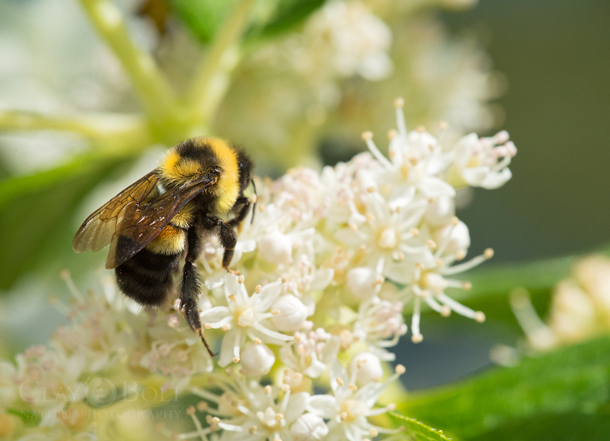
The state of Minnesota is one year in to a new program to help support the Rusty Patched Bumblebee, along with other native pollinators. (Photo: Courtesy of Xerces Society/ Clay Bolt)
FOLTZ JORDAN: Thank you!
BASCOMB: So, how will this new program in Minnesota work? Can you break it down for us, please?
FOLTZ JORDAN: So, the idea is that the program will provide funding to residential sites where turf conversion is a possibility. So, the idea is we'll be converting lawn or turf, managed turf, to something that's much more beneficial for pollinators. And there's a variety of options there, ranging from something simple like introducing clovers and other legumes into grasses. But, also, my expectation is that the majority of the funding will go towards converting that turf to diverse native plantings for pollinators that provide blooms spring through fall and really do a good job of supporting a wide variety of the species.
BASCOMB: And, how much money is being put into this program? How much can homeowners expect to be compensated?
FOLTZ JORDAN: The amount of money that was allocated for the program is $900,000, to be spent down over a two-year period. I am not sure what individual landowners can expect to receive. It will be, you know, really dependent on what projects they choose to do and at what scale.
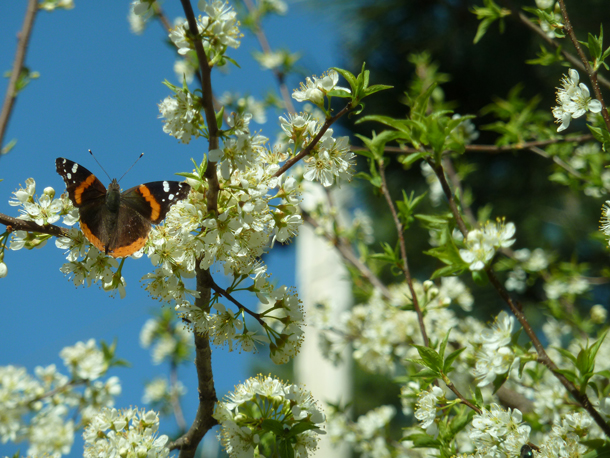
Butterflies, like this Red Admiral, are important pollinators, too! (Photo: Courtesy of Xerces Society/ Sarah Foltz Jordan)
BASCOMB: But they'll get reimbursed up to about 75% of their costs for doing this, is that right?
FOLTZ JORDAN: Exactly! Yeah. And even higher than that if they are in a priority zone for the Rusty Patch Bumblebee, which was a species that the program is kind of designed to really help support.
BASCOMB: So, why the Rusty Patch Bumblebee? Why design this program around that particular insect?
FOLTZ JORDAN: In 2017, it was listed as federally endangered. It has now declined by about 87%, it's still hanging on. In the metro region of Minnesota and Madison, Wisconsin, there's a few strongholds, although they could certainly be stronger. What we're looking at here is trying to boost up the population of this bee by connecting different places where we know it's still occurs, providing some connectivity by increasing habitat in those corridors. And, also just bringing up the number of flowers across its range.
BASCOMB: And presumably planting flowers and native plants and things will help a whole lot of pollinators other than just the Rusty Patch Bumblebee.
FOLTZ JORDAN: Exactly. Yup, it's sort of a flagship species. But these plantings will benefit a lot more than that bee. And I'm expecting many people will be really interested in supporting the monarch butterfly with their plantings as well by including milkweed host plants and a wide variety of nectar plants.
BASCOMB: Right. Can you put this into a larger context for us? I mean, what's the current situation with bees and pollinators more generally.
FOLTZ JORDAN: So, the Rusty Patch Bumblebee, which I was talking about earlier, has declined by 92%. So, that's pretty dramatic. It was formerly very common, and is now barely hanging on. Monarchs, similarly, are, you know, one of our more charismatic, well-studied insects. So we've seen 60 to 90%, declines in population size, depending on what years you're comparing, in our Eastern population. I mean that's sort of the tip of the iceberg. There's a lot of species that are not as well on our radar. And it's really hard to say how they're doing.
BASCOMB: The monarchs, as you said, are a charismatic insect, you know, maybe people had them in jars in school when they were kids and things. But, pollinators by definition are extremely important, for ourselves and for the ecosystem as a whole. Can you talk about that a bit, please?
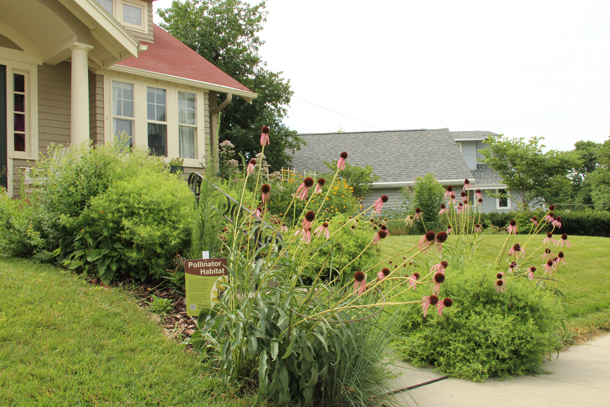
Having educational signage in your yard about pollinator habitat is a great way to inspire others to create pollinator habitat in their yards, too. (Photo: Courtesy of Xerces Society/ Sarah Foltz Jordan)
FOLTZ JORDAN: Sure! Yeah. I mean, the economic significance gets a lot of attention. So, you know, our food systems are really dependent on pollinators. But, I don't think we give pollinators maybe as much credit as we should for their role in preserving and sustaining our natural ecosystems. So, about 85% of our wild flowering plants are pollinator dependent. And, you know, pollinators are also kind of keystone species in other ways. So, they're providing pollination services that enables the fruit and seedset of a lot of plants, but they also are being consumed by birds and small mammals and kind of supporting these diverse food chains and ecosystems in that way as well.
BASCOMB: Hmm. And, so why are insects and pollinators in such sharp decline right now?
FOLTZ JORDAN: It's really a multi faceted problem. So, you know, they're being hit in a number of ways. There's been dramatic habitat loss, increases in pesticides, including a lot of pollinator lethal pesticides, and also increased disease spread. So, kind of circling back to the program we were initially talking about, this is addressing just kind of one aspect of pollinator threats, that habitat piece, but it's something that we all have the power to do something about. So, as we think about increasing habitat for pollinators in our yards and bringing in more flowers, my hope is that we're also thinking about pesticide reductions.
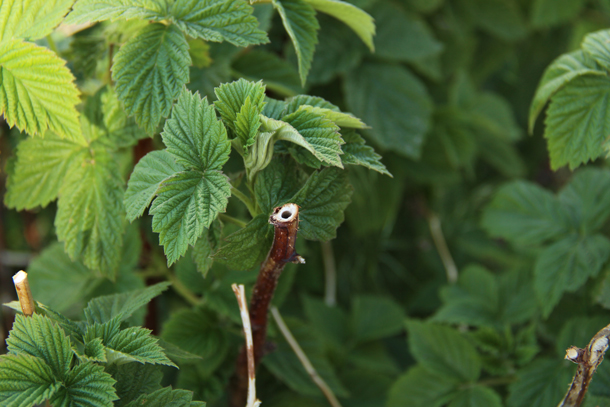
Pruning raspberry canes provides nesting habitat for many important bee species. (Photo: Courtesy of Xerces Society/ Sarah Foltz Jordan)
BASCOMB: So, Sara, what can you suggest for someone that's listening now and maybe wants to make their own yard more pollinator friendly?
FOLTZ JORDAN: The most important thing we all can start doing is thinking about our landscaping decisions, not just in terms of our own aesthetics, and, you know, maybe the status quo. But also thinking about these decisions in terms of how these plants that we choose to put into our yards can in turn support higher trophic levels, so the ecosystem a little bit more broadly. And I think when we start thinking through that lens, it becomes really clear that native plants are essential. And when I think about native plants, butterflies and moths really kind of hit home for me, because many of these butterflies and moths have really, really close relationships with certain native species that they can only feed on. And then a lot of our bees also are specialist species, and will only select pollen to feed their babies from certain plants. I think it's a little bit confusing for people sometimes because butterflies and bees will visit non-native plants. So it can look like 'Oh, these plants are doing a great job at attracting bees and butterflies.' But just because they're visiting doesn't mean that the nutrition that they're getting is adequate or preferred. And I noticed this in my own yard, I still grow quite a few cut flowers. But I used to have a lot of cut flowers and non-native ornamentals and have gradually chipped away at that and started converting most of that to native flowering plantings. And it has been just astounding to witness that change in the types of insects that I'm seeing and the abundance of insects that I'm seeing, just because of the plants being better suited to meet their needs.
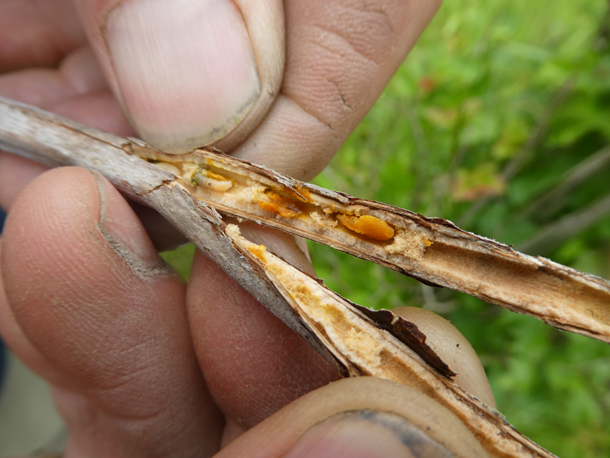
Many cavity nesting bees will create nests with chambers for their young in dead raspberry canes. (Photo: Courtesy of Xerces Society/ Sarah Foltz Jordan)
BASCOMB: And, clover even seems like a good place to start. You can plant that even in with your own grass, and it's relatively short. So it's not, you know, such a big change for people, I would think?
FOLTZ JORDAN: Exactly, yup. That's kind of a baby step, is getting some clover into your grass, or even easier would be just to - a lot of people have flowering weeds in their lawns that they work really hard to keep out. But, again, if we can kind of change our aesthetics and learn to see those weeds as something beneficial for other species that can be really helpful, just kind of letting those things... letting them go.
BASCOMB: So, Sarah, beyond flowers and native grasses and things, is there anything else that people can do?
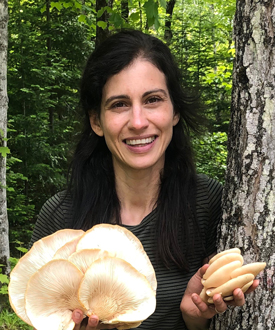
Sarah Foltz Jordan is a Senior Pollinator Conservation Specialist with the Xerces Society. (Photo: Courtesy of Xerces Society/ Sarah Foltz Jordan)
FOLTZ JORDAN: Yeah, flowers are critical for providing really important food. Like we've been talking about, native is best. But, we also need to remember that these insects have nesting and overwintering needs, basic needs for shelter, I guess. So, we really advocate for people trying to leave things like dead stems left in wildflower gardens, branches, brush piles, leaf litter, rock piles, or rock walls. One of my favorite kinds of bees is the Small Carpenter Bee. They nest in stems. So, I planted raspberry bushes right outside of our front door, and I prune them back every year at about, I don't know, maybe three feet, two to three feet tall. So it's a really easy height for me to observe what they're doing there. And what happens is the raspberries will flower in the spring and the little bees will come out and they'll collect pollen and bring it to their nest. And they nest in these raspberry canes. So, the cut ends that I create is the entrance to their homes. And I can watch them all day, just like, gathering pollen bringing it in. They make little bedrooms within the stem for each of their offspring. So, every baby gets its own room with its own little ball of pollen and nectar and then a wall and then they do it again. And it's kind of this linear series. And, then they actually exhibit parenting behavior as well, which is a little bit unusual in insects where they will watch that nest and protect it from predators and make sure those babies get off to a good start when they finally emerge. So, that's one of my favorite little bees to hang out with. (LAUGHS)
BASCOMB: Sarah Foltz Jordan is a Senior Pollinator Conservation Specialist with Xerces Society. Sarah, thank you so much for all this information.
FOLTZ JORDAN: Yeah, thank you, Bobby! It was my pleasure.
[MUSIC]
BASCOMB: We are spending a lot of time indoors these days.
But indoor air pollution can affect our health, creativity, and productivity.
For some insight we will be hosting a free live streamed conversation with renowned Harvard public health expert Joe Allen.
He’ll be talking about his new book, Healthy Buildings and exploring how we can design indoor spaces to maximize our well-being.
The event is May 12 at 6:30 p.m. Eastern.
Learn more about this and other events in our Good Reads on Earth series at our website, loe.org/events.
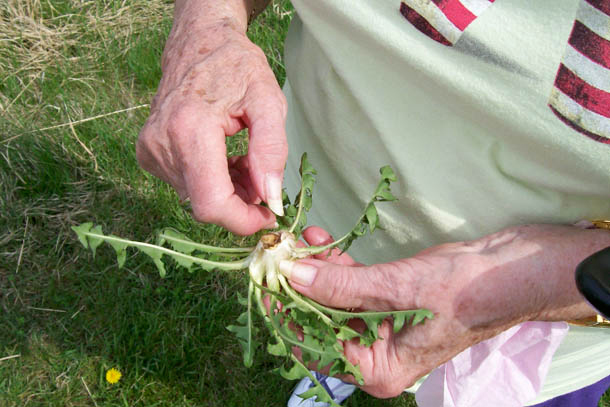
Grammy and her dandelions. (Photo: Chris Fetter)
BASCOMB: Dandelions are one of the surest signs of spring and a promise of summer. They can also be a nuisance if you are working on a perfectly manicured lawn. But one person's grass-choking weed can be another's culinary delight. Ann Murray of the public radio program The Allegheny Front has this story on one longtime dandelion-lovin’ grandma.
CHRIS: I don't think you should walk over there.
GRAM: I can do it, come on buddy.
MURRAY: This afternoon, 97-year-old Virginia Dobell, a.k.a. Grammy, will not be deterred by some uneven ground and wild grasses. She's doing what she's done for the past ninety springs...gathering the season's first batch of dandelion greens for dinner.
GRAMMY: Look at this. This is like a bed of 'em.
MURRAY: So this looks promising?
GRAMMY: Yes, and if you tell me they're all red, I'll probably faint.
MURRAY: Red stemmed dandelions are a no-no for connoisseurs like Grammy.
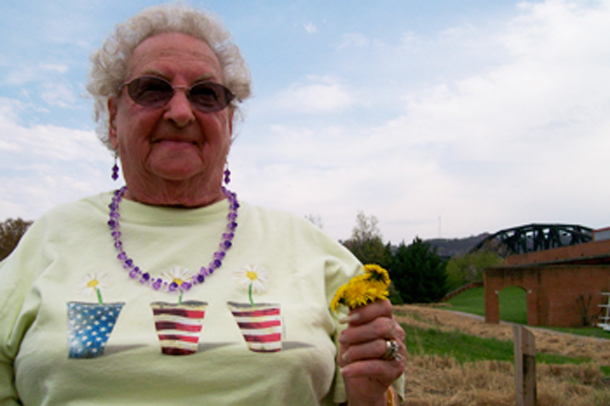
Ninety-seven year old Virginia Dobell, aka Grammy, has loved dandelions for most of her life. (Photo: Chris Fetter)
MURRAY: If it's red, does it tell you that it's a bad taste?
GRAMMY: They're very, very bitter. OK, gotta have my knife, toots.
MURRAY: Grammy's grandson, Chris Fetter, pulls out a small kitchen knife from a paper bag. With considerable effort, Grammy hangs on her cane, bends over and starts cutting a big dandelion out of the ground.
GRAMMY: You always leave the base of the dandelion on...like so.
MURRAY: So what do you actually eat here? What part are we looking for to eat?
GRAMMY: Right there.
MURRAY: She points at the long light green, almost white dandelion stems and spines.
GRAMMY: They come in the tall grass. When they're about that tall...they're the yum yum ones.
MURRAY: Grammy should know. She's been rounding up dandelions since she was seven. Back then it wasn't just for fun. She and her big family depended on dandelions and potatoes for food all spring and summer. Just like the European settlers who brought the dandelion over here to fill out their paltry diet. The roots contain taraxacin, which stimulates digestion, and the leaves are full of vitamin A and D. Today, Grammy's passing on the tradition to Chris.
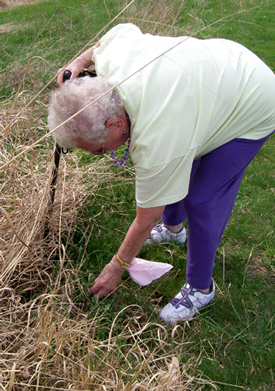
Grammy picks a plant. (Photo: Chris Fetter)
GRAMMY: You have to cut all the way around. Atta boy. See if you pull 'em up, you're in trouble. (Laughs)
CHRIS: I didn't do too good on that one.
GRAMMY: That's a white one, see. There you're talking sense.
MURRAY: While Chris cuts dozens of plants, Grammy tells me some dandelion pickin' stories. On one of her first excursions, her brother followed her to the family's apple orchard.
GRAMMY: So he gets in a tree and hides. When I get all my dandelions that I think's gonna do us for supper, I start for the house. And all of a sudden out of the tree he came. Grabbed my bag and spread the dandelions all along the way.
MURRAY: What a dirty trick.
GRAMMY: LAUGHS. Yes, a dirty trick it was.
MURRAY: Dirty tricks aside, Grammy's been making dandelion salads for years. Back in her apartment, she thumbs through the well-worn cookbook her mother passed on to her in 1925. In the margin, her mom's written 'very good' next to the recipe for hot dandelion dressing.
GRAMMY: Of course, the first thing we do is fry the bacon and make that real nice crisp.
MURRAY: While Grammy gets the bacon going, Chris chops the dandelion greens.
CHRIS: Do you want to leave the leaves long, Grammy, or do you want them…?
GRAMMY: No, in half so they’re, you know, easy to eat.
MURRAY: After they finish up, they pull out a big pan and mix in milk, egg, a little flour and lots of vinegar.
CHRIS: Tell me when.
GRAMMY: That's good enough.
MURRAY: Then they pour the concoction in with hot bacon grease.
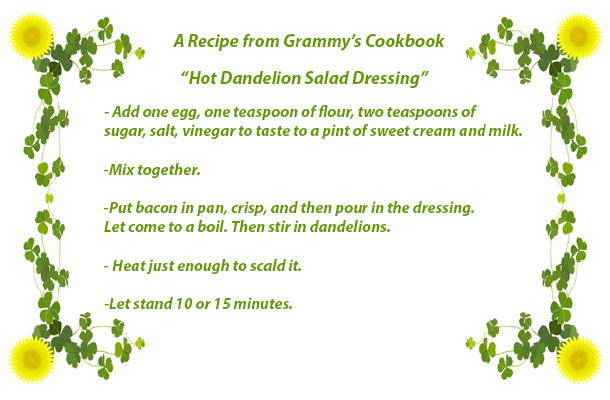
A recipe from Grammy’s cookbook. (Photo: Chris Fetter)
GRAMMY: And we keep stirring, stirring, stirring. Now we're going to put it on the salad and just swish and swish and swish. OK, it is ready.
MURRAY: Just in time for Sunday dinner. The table's set and Chris and his mom, Gloria, let Grammy take the first bite of dandelion salad.
GRAMMY: Ohhhhh it is good!!
CHRIS: Good job, Grammy.
GLORIA: Good job.
CHRIS: Tastes great.
MURRAY: This is Ann Murray.
GRAMMY: Oh heavenly days….
BASCOMB: Ann Murray’s story of Grammy and her dandelions came to us courtesy of Allegheny Front. This story originally aired back in 2012. Virginia Dobell passed away a year later in 2013 at 98 years old.
[MUSIC]
BASCOMB: Living on Earth is produced by the World Media Foundation.
Our crew includes Naomi Arenberg, Paloma Beltran, Thurston Briscoe, Jenni Doering, Jay Feinstein, Merlin Haxhiymeri, Candice Siyun Ji, Don Lyman, Isaac Merson, Aynsley O’Neill, Jake Rego, and Jolanda Omari.
Tom Tiger engineered our show.
Alison Lirish Dean composed our themes.
You can hear us anytime at L-O-E dot org, Apple Podcasts and Google Podcasts- and like us, please, on our Facebook page - Living on Earth.
We tweet from @livingonearth. And find us on Instagram at livingonearthradio.
Steve Curwood is our Executive Producer.
I’m Bobby Bascomb.
Thanks for listening!
ANNOUNCER: Support for Living on Earth comes from Sailors for the Sea and Oceana. Helping boaters race clean, sail green, and protect the seas they love. More information at sailors for the sea dot org.
ANNOUNCER 2: PRX.
Links
More about the MN pollinator program
Learn more about what native plants are good for pollinators in your region
More about the Rusty Patched Bumblebee
See a story from the LOE archives about a plant biologist’s love for dandelions
Living on Earth wants to hear from you!
Living on Earth
62 Calef Highway, Suite 212
Lee, NH 03861
Telephone: 617-287-4121
E-mail: comments@loe.org
Newsletter [Click here]
Donate to Living on Earth!
Living on Earth is an independent media program and relies entirely on contributions from listeners and institutions supporting public service. Please donate now to preserve an independent environmental voice.
NewsletterLiving on Earth offers a weekly delivery of the show's rundown to your mailbox. Sign up for our newsletter today!
 Sailors For The Sea: Be the change you want to sea.
Sailors For The Sea: Be the change you want to sea.
 The Grantham Foundation for the Protection of the Environment: Committed to protecting and improving the health of the global environment.
The Grantham Foundation for the Protection of the Environment: Committed to protecting and improving the health of the global environment.
 Contribute to Living on Earth and receive, as our gift to you, an archival print of one of Mark Seth Lender's extraordinary wildlife photographs. Follow the link to see Mark's current collection of photographs.
Contribute to Living on Earth and receive, as our gift to you, an archival print of one of Mark Seth Lender's extraordinary wildlife photographs. Follow the link to see Mark's current collection of photographs.
 Buy a signed copy of Mark Seth Lender's book Smeagull the Seagull & support Living on Earth
Buy a signed copy of Mark Seth Lender's book Smeagull the Seagull & support Living on Earth

